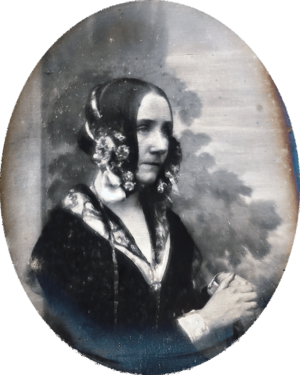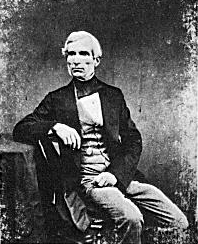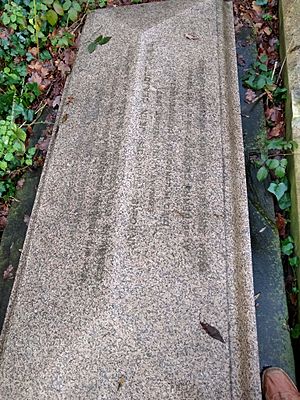Antoine Claudet facts for kids

Antoine François Jean Claudet (born August 18, 1797 – died December 27, 1867) was a French photographer and artist. He worked in London and was famous for making special early photographs called daguerreotypes.
Contents
Who Was Antoine Claudet?
Antoine Claudet was born in La Croix-Rousse, France. His father, Claude Claudet, was a cloth merchant.
Starting His Career
Claudet first worked at a glass factory near Paris. Later, he moved to England to help sell glass products. While there, he learned about a new way to take pictures called the daguerreotype process. This process was invented by Louis Daguerre.
Claudet became one of the first people in England to open a business taking photos using this new method. He mostly took portraits, which are pictures of people.
Making Photography Better
Antoine Claudet was very creative and made many improvements to photography.
- He found a way to make the daguerreotype process faster. This meant people didn't have to sit still for as long to have their picture taken.
- He invented the red darkroom safelight. This special light allowed photographers to work with sensitive photo materials without ruining them.
- He also thought of using many photos in a row to create the feeling of movement. This was an early idea that led to movies!
- Some people believe he was the first to use painted backgrounds in photos.
His Photography Studios
From 1841 to 1851, Claudet had a photo studio on the roof of the Adelaide Gallery in London. In 1843, he took one of the only two known photos of Ada Lovelace, a famous mathematician.
He opened more studios, including one at the Colosseum in Regent's Park. In 1851, he moved his main business to 107 Regent Street. He called this new place a "Temple to Photography."
Famous Photos and Inventions
Claudet took many pictures, about 1,800 every year! Some of the famous people he photographed include Michael Faraday, a scientist, and Charles Babbage, a computer pioneer. His photo of Hemi Pomara is the oldest known picture of a Māori person.
He also invented special tools for photography:
- In 1848, he created the photographometer. This tool helped measure how strong light was for taking pictures.
- In 1849, he made the focimeter. This helped photographers get a perfect focus for portraits.
In 1853, he became a member of the Royal Society, a group for important scientists. He also received many awards, including being named "Photographer-in-ordinary" to Queen Victoria in 1853. Ten years later, he received an award from Napoleon III of France.
Later Life
Antoine Claudet passed away in London in 1867 and is buried in Highgate Cemetery. Sadly, less than a month after he died, his "Temple to Photography" studio burned down. Many of his valuable photographs were lost in the fire.
Images for kids
-
A photo of Ada Lovelace taken by Claudet around 1843.






